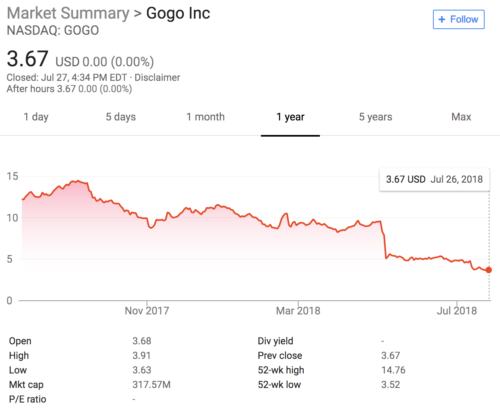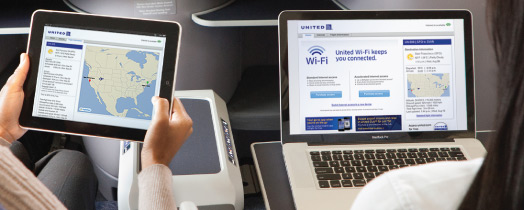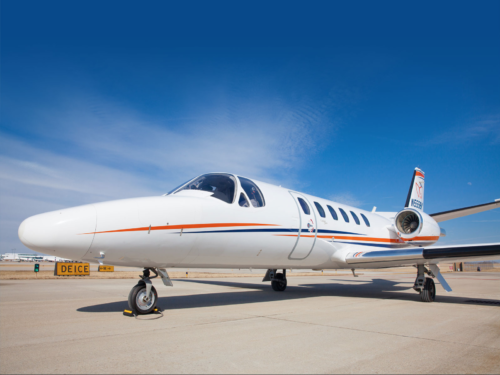To say that Gogo Inc. — inflight Wi-Fi provider to American Airlines, Delta, and others — has had a rough go of it over the past year would be generous.
The Chicago-based company, which has been providing internet in the skies to commercial aircraft for a decade now, is losing money hand over fist, faces nearly $1 billion in debt obligations coming due in the next few years and has lost almost 75-percent of shareholder value since last September.

Image by Google
A management shakeup early this year brought a new CEO and executive team, but it hasn’t been smooth sailing since. Key customer Delta Air Lines endured significant satellite reliability issues over the winter when de-icing fluid began infiltrating antenna equipment.

Gogo was the first company to bring wirelesss internet to commercial jets, but many airlines, including United, have gone with faster competing solutions.
Other low points for the company came when Moody’s downgraded its view of Gogo from “highly speculative” to “substantial risks” in May as well as earlier this month when the company laid off close to 5-percent of its workforce.

Delta Private Jet’s Citation Bravo, a “Light Jet” option, which seats up to 9 passengers. Image by Delta Private Jets.
Breakup Possible?
Gogo operates two distinct business divisions, Business Aviation, where it offers its limited bandwidth air-to-ground connectivity to private jets and other lightweight aircraft, and Commercial Aviation, where it has joined the race to transition its A2G systems to its 2Ku satellite connectivity solution, which is comparable in speed to a home connection, even capable of streaming media.
Gogo CEO Oakleigh Thorne told the Wall Street Journal he is considering bifurcating the profitable private jet sector.
Business Aviation is a smaller overall business, but is profitable. The Commercial Aviation division is saddled with debt after building out its air-to-ground network and often paying for airline installations. Air-to-ground is now essential absolute, a solution that provided neither a quality user experience nor sufficient bandwidth to generate an operating profit. The company as a whole has not had a profitable quarter since its initial public offering in 2013.
Investors appear skeptical of Gogo’s ability to remain as a standalone company until, and if, it can begin to turn a profit once additional commercial aircraft are equipped with the faster 2Ku service.
Upshot
As the connected commercial aviation industry’s chief driver of growth moving forward, satellite internet is spurring a gold rush amongst suppliers scrambling to strike airline deals rich enough to ensure future survival.
Flawless execution of Gogo 2Ku strategy is its only realistic chance of staving off eventual bankruptcy or acquisition.
The responses below are not provided or commissioned by the bank advertiser. Responses have not been reviewed, approved or otherwise endorsed by the bank advertiser. It is not the bank advertiser's responsibility to ensure all posts and/or questions are answered.
3 comments
I complained once to Gogo via Twitter. They blocked me.
They should cap the number of people who use the service on each flight. Better to have a few people getting good service that to have a lot of passengers getting no service
The new CEO is quoted as saying that the only measurement of success Gogo previously used was how well the connection was reaching the airplane, and that moving forward more emphasis and analysis will be on the user experience such as browsing performance. Hopefully customer service is included in the revamp given your prior experience.
Too slow and overpriced.
Go to competition.